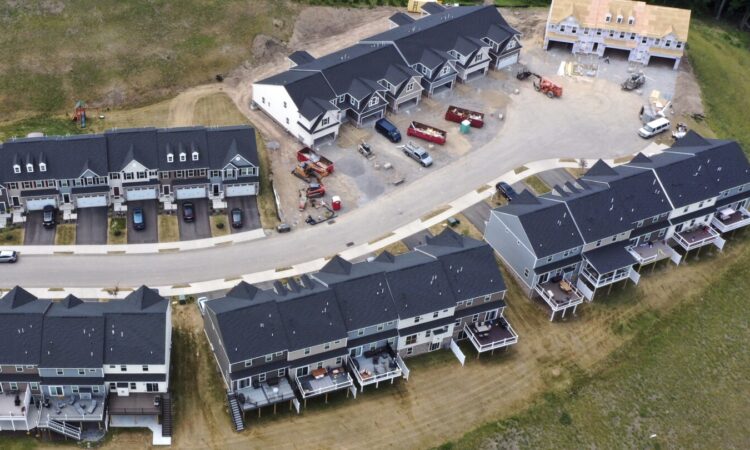Average long-term US mortgage rate falls to 6.67%, third straight drop since climbing to 2023 high

LOS ANGELES (AP) — The average long-term U.S. mortgage rate fell for the third time in as many weeks, a welcome boost for homebuyers facing a housing market that’s been held back this year by a tight inventory of homes for sale.
Mortgage buyer Freddie Mac said Thursday that the average rate on the benchmark 30-year home loan fell to 6.67% from 6.69% last week. A year ago, the rate averaged 5.81%.
The average rate on 15-year fixed-rate mortgages, popular with those refinancing their homes, also fell this week, slipping to 6.03% from 6.10% last week. A year ago, it averaged 4.92%, Freddie Mac said.
“Mortgage rates slid down again this week but remain elevated compared to this time last year,” said Sam Khater, Freddie Mac’s chief economist.
With the latest drop, the average rate on a 30-year mortgage is now at its lowest level since the last week of May, when it was at 6.57%. The average climbed to 6.79%, its highest level so far this year, in the first week of June.
A decline in mortgage rates can save homebuyers hundreds of dollars a month in borrowing costs on a home loan. That can make a big difference at a time when a historic-low level of homes on the market is spurring bidding wars that are helping keep prices from falling sharply after soaring in recent years.
The average rate on a 30-year home loan is still more than double what it was two years ago, when the ultra-low rates spurred a wave of home sales and refinancing. The far higher rates now are contributing to the low level of available homes by discouraging homeowners who locked in those lower borrowing costs two years ago from selling.
The dearth of properties on the market is also a key reason sales of previously occupied U.S. homes fell for the third month in a row in May, the National Association of Realtors said Thursday.
Low mortgage rates helped fuel the housing market for much of the past decade, easing the way for borrowers to finance ever-higher home prices. That trend began to reverse a little over a year ago, when the Federal Reserve began to hike its key short-term rate in a bid to slow the economy to lower inflation.
Global demand for U.S. Treasurys, which lenders use as a guide to pricing loans, investors’ expectations for future inflation and what the Fed does with interest rates influence rates on home loans.
All told, the Fed raised its benchmark rate 10 times, starting in March 2022. But the central bank opted to forgo another increase at its meeting of policymakers last week. Still, the Fed warned that it could raise interest rates two more times this year in its battle against inflation.
That open-ended approach has heightened uncertainty about the Fed’s next moves, which could lead to more volatile moves for mortgage rates.
“With the potential for additional rate hikes ahead, mortgage rates will remain elevated throughout the remainder of the year,” said Jiayi Xu, an economist at Realtor.com.






